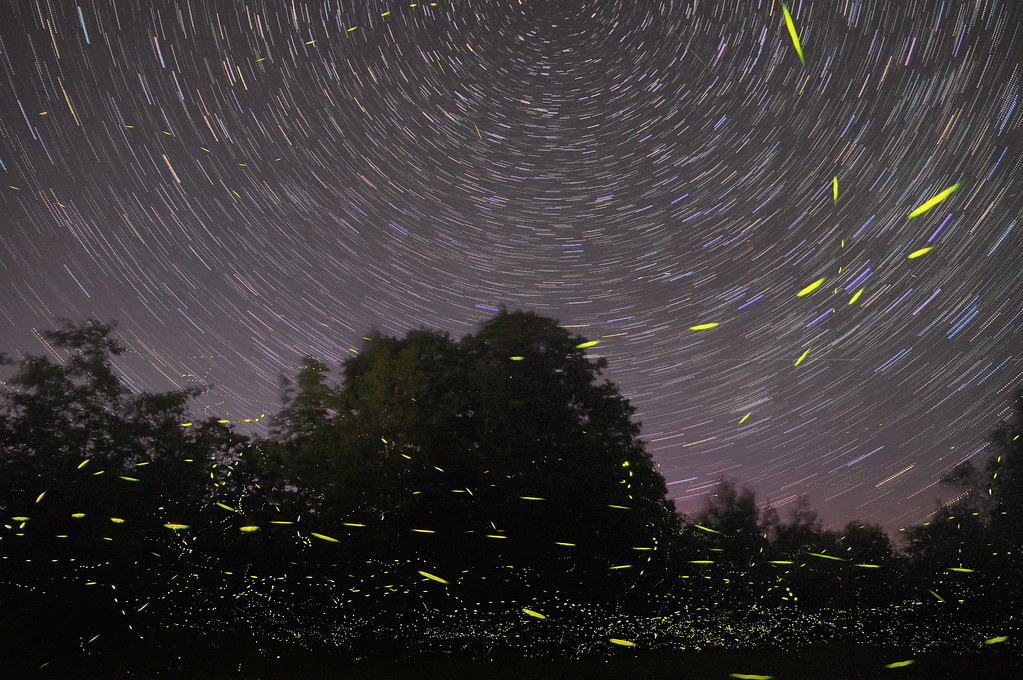Something magical happens every year in the Smoky Mountains and at Pure Water Farm.. fireflies under the stars.

“Synchronous fireflies (Photinus carolinus) are one of at least 19 species of fireflies that live in Great Smoky Mountains National Park. They are the only species in America whose individuals can synchronize their flashing light patterns.
Fireflies (also called lightning bugs) are beetles. They take from one to two years to mature from larvae, but will live as adults for only about 21 days. While in the larval stage, the insects feed on snails and smaller insects. Once they transform into their adult form, they do not eat.
Their light patterns are part of their mating display. Each species of firefly has a characteristic flash pattern that helps its male and female individuals recognize each other. Most species produce a greenish-yellow light; one species has a bluish light. The males fly and flash and the usually stationary females respond with a flash. Peak flashing for synchronous fireflies in the park is normally within a two-week period in late May to mid-June.
Synchronous fireflies produce light in their lanterns, the pale area of the abdomen visible on the underside of the insect above. The production of light by living organisms is called bioluminescence. Fireflies are a good example of an organism that bioluminesces, but there are others as well, such as certain species of fungus, fish, shrimp, jellyfish, plankton, glowworms, gnats, snails, and springtails.
Bioluminescence involves highly efficient chemical reactions that result in the release of particles of light with little or no emission of heat. Fireflies combine the chemical luciferin and oxygen with the enzyme luciferase in their lanterns (part of their abdomens) to make light. The light produced is referred to as a “cold” light, with nearly 100% of the energy given off as light. In contrast, the energy produced by an incandescent light bulb is approximately 10% light and 90% heat.
No one is sure why the fireflies flash synchronously. Competition between males may be one reason: they all want to be the first to flash. Or perhaps if the males all flash together they have a better chance of being noticed, and the females can make better comparisons.”
source: https://www.nps.gov/grsm/learn/nature/fireflies.htm
The synchronous mating event only occurs for 2 weeks every year in early June. However, you will see lightning bugs most summer nights at Pure Water Farm. What could be more magical to end your ceremony evening than a night under the stars and fireflies?
Contact us now to schedule a tour of Pure Water Farm for your wedding or special event.











